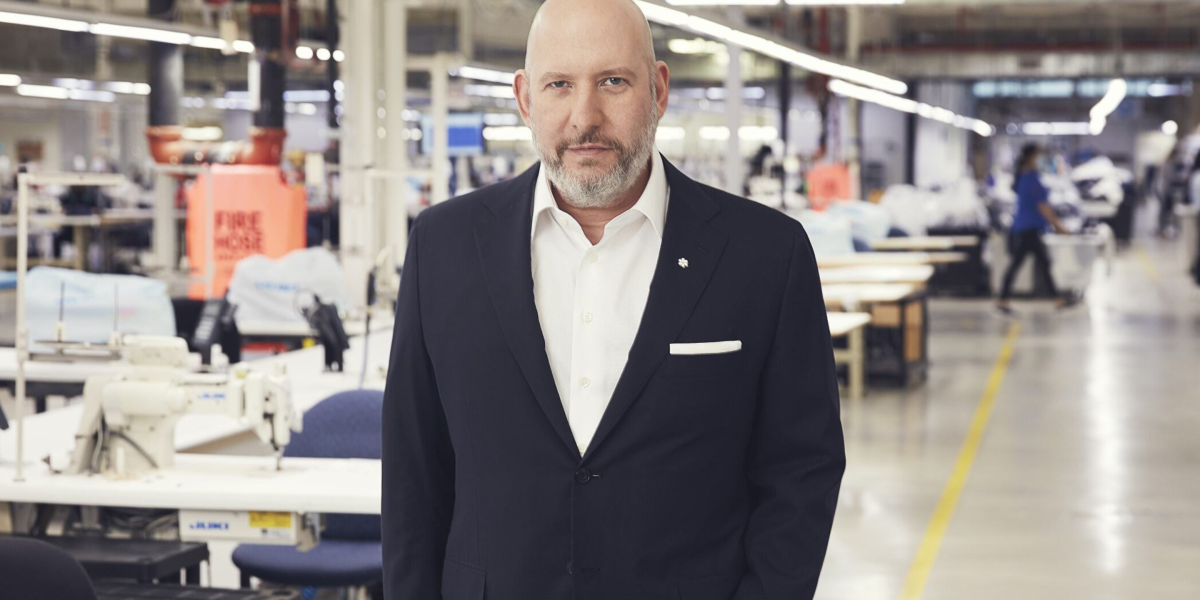When you think of Canada Goose, you probably picture its trademark fur-trimmed parka, which is designed to keep people warm in sub-zero temperatures.
But today, the $1.5 billion winterwear company’s logo can actually be found on sneakers, T-shirts, socks and more. “We don’t just make outerwear anymore,” CEO Dani Reiss tells Fortune.
Soon, you’ll even be able to buy Canada Goose for your home.
But the leap from the safety of clothing retail—the space the brand has operated in since 1957—to the highly competitive market of homewares is a gamble, experts tell Fortune.
Canada Goose’s rapid expansion
Since taking the helm of his grandfather’s company in 2001, Reiss has scaled Canada Goose from relative obscurity into a globally recognized brand with 68 stores around the world, including in sweltering spots like Miami and Australia.
“We began with lightweight down in 2011, leveraging our reputation for extreme warmth to approach this new category with purpose,” Reiss explains.
Since then, it has ventured deeper into apparel, with its first knitwear collection hitting stores in 2017, followed by footwear in 2021.
Now, its non-heavyweight down products make up nearly half of Canada Goose’s revenue, according to Reiss. So it’s easy to see why the company is looking to continue emulating the success it’s experienced outside of parkas with eyewear, luggage, and even homeware looking ahead.
However, it’s not a guaranteed easy win for the brand, say marketing experts.
The marketing agency Live & Breathe has worked for decades with retailers like Morrisons, Real Techniques and World Duty Free on launching campaigns and brand extensions.
As its chief strategy officer Ben Alalouff points out, previous Canada Goose product launches—from trail boots to light gilets—have all tapped into the brand’s core messaging to get outdoors wearing Canada Goose.
“You don’t necessarily think about Canada Goose when you’re at home,” he says. “You look at the website, you look at the socials and it’s all about premium outerwear. There’s nothing about having a cozy or premium home… It’s building from scratch, so that could be a problem.”
The other elephant in the room is that many people splurge on Canada Goose because it’s a premium product. Dipping its toes into new categories to boost its bottom line could cheapen the brand.
Julio Hernandez, who leads KPMG’s global customer advisory practice, tells Fortune that “there’s graveyards out there of companies that have tried to do that and haven’t done it successfully.”
“We used to have a very famous brand here in the United States, a beer company called Schlitz,” he highlights.
During the 1970s, in an attempt to cut production costs and keep up with growing demand, Schlitz’s owners reformulated its recipe. “Almost overnight they lost their their following,” Hernandez says.
Likewise, consumers who splash out on Canada Goose expect a certain quality.
“The fact is you go on their website, they’ll tell you what’s the temperature rating etc. There’s some science behind that—it’s like ‘oh man, these guys really know what they’re doing,’” Hernandez adds.
“Is that ‘they really know what they’re doing’ [going to] translate into a new mug? I don’t know.”
Canada Goose wants to be like Apple
Canada Goose wouldn’t reveal the exact homeware products it’ll be releasing. However, its previously released limited edition heavy-weight blankets could serve as a hint.
“Canada Goose probably has enough of a pedigree to take a baby step,” Alalouff says, adding that picnic accessories, blankets, and candle holders would tie its new indoors collection with its existing outerwear reputation.
“Take that small step rather than that huge leap of immediately saying, ‘OK, we are now a homeware brand.’ You’re not, you’re an outdoors brand,” he adds. “Test the waters and then over time, you play a bigger part in your consumer’s lifestyle.”
Either way, diluting the brand isn’t something Canada Goose’s CEO is concerned about as it forays into homeware, eyeware, warm-weather clothing, luggage and more.
“I think about it, but I’m not worried about it,” Reiss says. “The reason I’m not worried about it is because I look at other brands out there in the world and some of the strongest brands in the world are much, much bigger than us.”
Instead of thinking like a fashion brand, he tells Fortune he’s looking up to the likes of Rolex, Range Rover and Apple for inspiration.
“These are the kinds of brands I look at that are big, and they’re not in my, in our industry,” the 50-year-old exec explains, adding that they’re “great examples of building a brand the right way.”
“We became a leader of what we do, by doing our own thing. We chose to stay being made in Canada, when everybody else in Canada—even in North America, and in many cases in Europe—were leaving the West to go manufacturing in lower-price environments…. That decision made us the company we are today. So that’s why I look at brands outside of this space.”
Plus, even after more than two decades at Canada Goose’s helm, Reiss asserts that he’s still thinking about the brand’s growth “in generations, not quarters.”
But ultimately, Alalouff warns that brands that think too ahead of themselves could end up in an early grave.
“Strategically, you can do whatever you want if you’re a cool enough brand and you have enough buy-in,” he argues. “But to think that you are going to play this incredibly wide impact on someone’s life, unless you’re the likes of Apple, is a toughie.
“As soon as a brand starts to think about itself as more than just something useful in a moment of a consumer’s life and starts to think about itself as something that matters all the time, that’s when you start to think a bit too much of yourself and start to get into trouble.”
